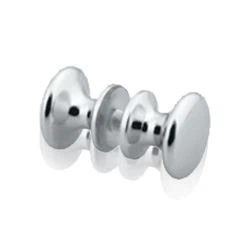Hey there! As a supplier of stainless steel vents, I often get asked about the sound level of these vents during operation. It's a crucial aspect, especially for those who are sensitive to noise or have specific requirements in quiet environments. So, let's dive right into it and explore what the sound level of a stainless steel vent during operation really is.
First off, it's important to understand that the sound level of a stainless steel vent can vary depending on several factors. One of the main factors is the design of the vent. Different designs have different airflow patterns, and this can significantly affect the noise they produce. For example, a vent with a smooth and streamlined design will generally have less turbulence in the airflow, which means less noise. On the other hand, a vent with a more complex or irregular design might cause more air disturbances, resulting in a higher sound level.
The size of the vent also plays a role. Larger vents usually allow for a greater volume of air to pass through, which can lead to more noise if not properly designed. However, if the larger vent is designed with noise - reducing features, such as internal baffles or sound - absorbing materials, the sound level can be kept in check. Smaller vents, on the contrary, may have less air volume passing through, but if the airflow velocity is too high, it can also generate a significant amount of noise.
Another factor is the speed of the airflow. The faster the air moves through the vent, the more noise it is likely to produce. This is because high - velocity air creates more friction and turbulence. In some industrial settings where there is a need for a large amount of air exchange, the vents may have a relatively high airflow speed, which can result in a louder sound. In residential or office environments, where quietness is preferred, the airflow speed is usually kept lower to minimize noise.
The quality of the materials used in the vent can also impact the sound level. High - quality stainless steel is often more rigid and less likely to vibrate compared to lower - quality materials. Vibration can be a major source of noise, as it can cause the vent to resonate and produce an annoying humming or rattling sound. When we manufacture our stainless steel vents, we use top - notch materials to ensure that they are sturdy and less prone to vibration.
Now, let's talk about how to measure the sound level of a stainless steel vent. The most common unit for measuring sound is the decibel (dB). A whisper is typically around 30 dB, normal conversation is about 60 dB, and a lawnmower can be around 90 dB. The sound level of a stainless steel vent during normal operation usually ranges from 30 dB to 60 dB, depending on the factors we mentioned earlier. In a quiet residential setting, a vent with a sound level of around 30 - 40 dB would be ideal, as it won't be very noticeable. In a commercial or industrial environment, a slightly higher sound level of 50 - 60 dB might be acceptable, especially if there are other background noises.
To get an accurate measurement of the sound level, you can use a sound level meter. This device can be placed near the vent to measure the noise it produces. However, it's important to note that the measurement can be affected by the surrounding environment. For example, if there are other noisy equipment nearby, it can interfere with the measurement. So, it's best to take the measurement in a relatively quiet area.
If you're concerned about the sound level of a stainless steel vent, there are several ways to reduce it. One option is to install a silencer. A silencer is a device that is designed to absorb or reflect sound waves, reducing the noise that escapes from the vent. Another option is to use flexible ductwork. Flexible ducts can help to dampen vibrations and reduce noise transmission. You can also consider adding insulation around the vent. Insulation can absorb sound and prevent it from spreading to the surrounding area.
At our company, we understand the importance of providing quiet - operating stainless steel vents. That's why we invest a lot of time and effort in research and development to improve the design of our vents. We test each vent to ensure that it meets the required sound level standards. Whether you need a vent for a residential, commercial, or industrial application, we have a wide range of options to choose from.
In addition to stainless steel vents, we also offer other related products. For example, if you're in the marine industry, we have Swivel Hasp, Plastic Rod Holder, and Stainless Steel Rod Holder. These products are made with the same high - quality standards as our vents and are designed to meet the specific needs of our customers.
If you're interested in our stainless steel vents or any of our other products, we'd love to hear from you. Whether you have questions about the sound level, the design, or the installation process, our team of experts is ready to assist you. We can provide you with detailed product information, quotes, and even samples if needed. Don't hesitate to reach out to us for a procurement discussion. We're confident that we can find the right solution for your needs.


References
- "Noise Control Engineering: Principles and Applications" by Cyril M. Harris
- "Handbook of Acoustics" by Malcolm J. Crocker



